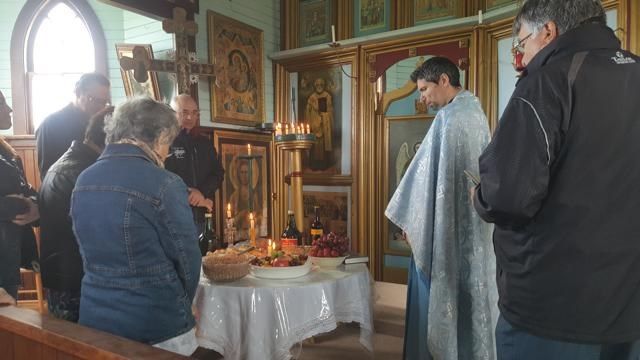Elm Springs Ascension of our Lord Romanian Orthodox Church located just north of Wood Mountain celebrated its feast day on May 25. The church, named for one of the 12 major feast days on the Orthodox Church calendar, was built in 1926 and its history tells the story of the Romanian settlement in the Wood Mountain region and the opening of the Canadian West to farming.
Descendants of these first pioneers flocked to the parish to celebrate the liturgy of the Feast of Ascension of our Lord. This day commemorates the Orthodox Christian belief of the bodily ascension of Jesus Christ to heaven on the fortieth day after Easter, as recorded in Acts 1-2 of the bible. Many of the Romanian traditions from the Bukovyna region were also enacted on this day.
The liturgy was celebrated by Father Cristian Frunzulica from Regina of the Roman Orthodox Episcopate of America. The Orthodox liturgy is described by scholars as a “conversation” with the priest chanting and the choir singing responses. The choir is led by a cantor. Don Punga was the cantor for this service.
The main goal of the liturgy is to prepare the Holy Eucharist and each part of the service is built around its preparation. It is also a full-sensory experience with singing, the smells of incense wafting from the censor, the visual beauty of the church interior and the physical gestures of the liturgical practice.
An interesting aspect of the feast day was the memorial service that followed the liturgy that included traditional Romanian practices. Bowls of fruit, round braided bread called kolach and coliva, a boiled wheat dish sweetened with honey, were placed on a table while the memorial service was sung. The final hymn “Memory Eternal” was sung in Romanian as all of the parishioners held the two bowls of memorial coliva and moved it up and down in a symbolic gesture of the dead rising to life. Following the service inside the church, the priest with the cantor assisting sprinkled holy water on each of the graves as is the practice following Easter in the Orthodox custom.




